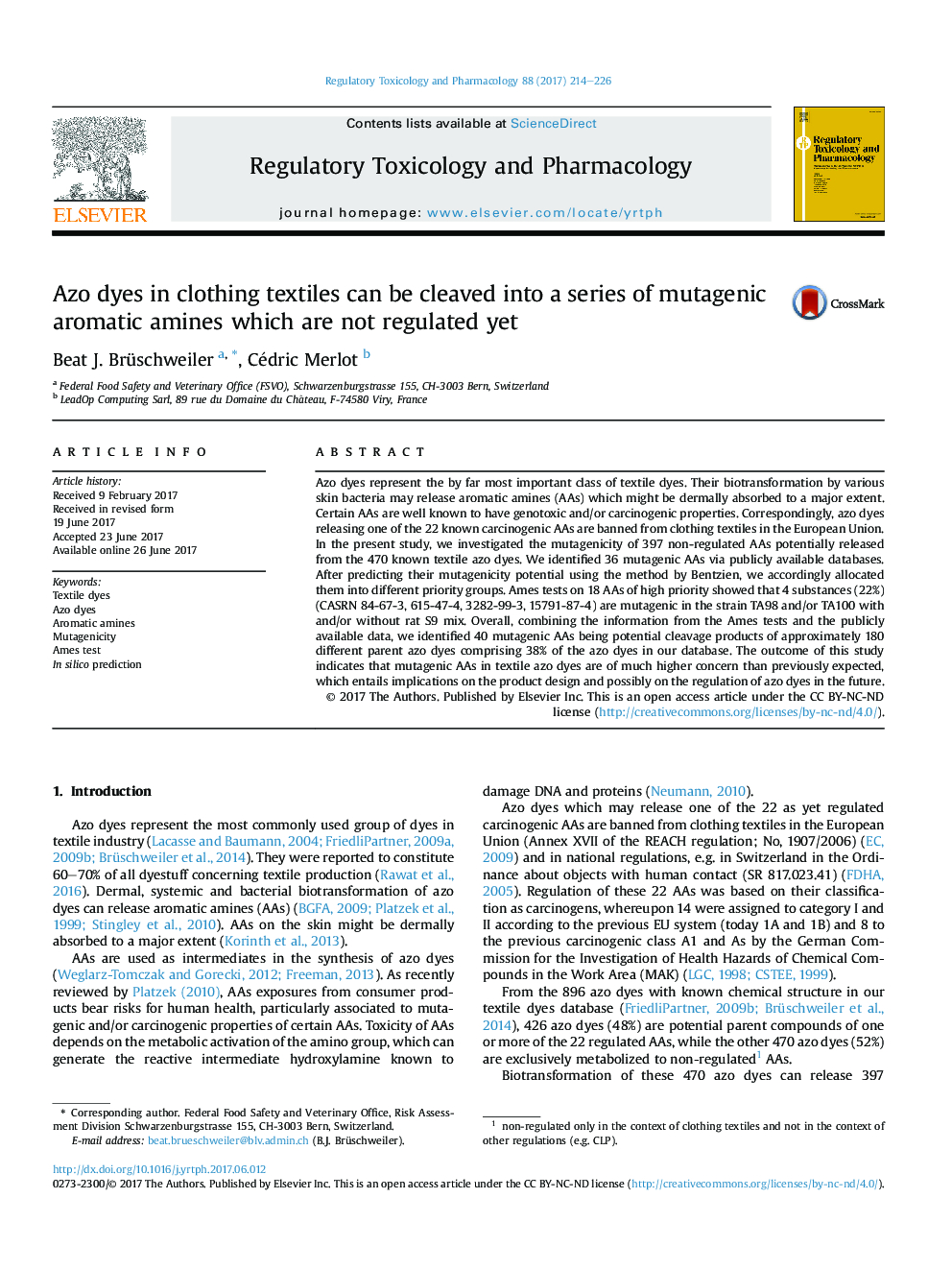| کد مقاله | کد نشریه | سال انتشار | مقاله انگلیسی | نسخه تمام متن |
|---|---|---|---|---|
| 5561171 | 1562115 | 2017 | 13 صفحه PDF | دانلود رایگان |
- Forty mutagenic aromatic amines (AAs) from azo dyes in textiles could be identified.
- They are cleavage products from 180 different parent azo dyes used in textiles.
- Thirty-six AAs are mutagenic based on publicly available databases.
- Four AAs without experimental data were found to be positive in the Ames test.
- Mutagenicity of AAs from textile azo dyes is a much larger issue than thought.
Azo dyes represent the by far most important class of textile dyes. Their biotransformation by various skin bacteria may release aromatic amines (AAs) which might be dermally absorbed to a major extent. Certain AAs are well known to have genotoxic and/or carcinogenic properties. Correspondingly, azo dyes releasing one of the 22 known carcinogenic AAs are banned from clothing textiles in the European Union. In the present study, we investigated the mutagenicity of 397 non-regulated AAs potentially released from the 470 known textile azo dyes. We identified 36 mutagenic AAs via publicly available databases. After predicting their mutagenicity potential using the method by Bentzien, we accordingly allocated them into different priority groups. Ames tests on 18 AAs of high priority showed that 4 substances (22%) (CASRN 84-67-3, 615-47-4, 3282-99-3, 15791-87-4) are mutagenic in the strain TA98 and/or TA100 with and/or without rat S9 mix. Overall, combining the information from the Ames tests and the publicly available data, we identified 40 mutagenic AAs being potential cleavage products of approximately 180 different parent azo dyes comprising 38% of the azo dyes in our database. The outcome of this study indicates that mutagenic AAs in textile azo dyes are of much higher concern than previously expected, which entails implications on the product design and possibly on the regulation of azo dyes in the future.
Journal: Regulatory Toxicology and Pharmacology - Volume 88, August 2017, Pages 214-226
